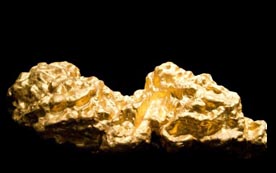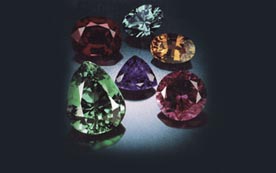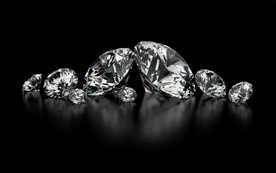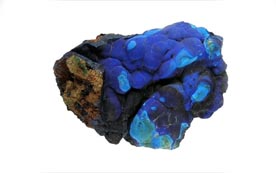History of Greek Jewellery
12 Dec 2012- Details
- Written by Saonl
 The beginnings of Greek jewellery can be traced back to remote prehistory. Masterpieces of exceptional workmanship and finesse have been found in Crete and on other Aegean islands where the Minoan civilization flourished, while astonishing are the finds from Mycenae, whose civilization succeeded the Minoan and constituted the basis for the development of historical Greek civilization, nurturing the narrative of the Homeric Epic, as well as the literature and iconography of Antiquity.
The beginnings of Greek jewellery can be traced back to remote prehistory. Masterpieces of exceptional workmanship and finesse have been found in Crete and on other Aegean islands where the Minoan civilization flourished, while astonishing are the finds from Mycenae, whose civilization succeeded the Minoan and constituted the basis for the development of historical Greek civilization, nurturing the narrative of the Homeric Epic, as well as the literature and iconography of Antiquity.
To this day Greek silver – and goldsmiths draw creative inspiration from Homer's remarkable descriptions of Achilles' shield, of Aphrodite's girdle, of the door knobs in the palace at Troy…  After the collapse of the Mycenaean world came the Geometric and goldsmithing, like the other arts, displayed little of the imaginative wealth of the previous centuries, yet the flame of tradition was kept alight, to flare up again shortly after 800 BC when jewellery – making flourished anew and pieces of refined technique and delicate artistry appeared in the Aegean islands.
After the collapse of the Mycenaean world came the Geometric and goldsmithing, like the other arts, displayed little of the imaginative wealth of the previous centuries, yet the flame of tradition was kept alight, to flare up again shortly after 800 BC when jewellery – making flourished anew and pieces of refined technique and delicate artistry appeared in the Aegean islands.
Though Greece suffered greatly from the Persian Wars in the ensuing Archaic period (600-475 BC) these luckily had little effect on the high level of culture enjoyed by Hellenism. The arts continued with increased rigour in the Greek cities on the shores of the Euxine Pontus (Black Sea), in southern Italy and Sicily, even as far as the Iberian peninsula Indeed from the burgeoning activity, the rarity of designs and the sophisticated techniques observed in the jewellery of Greek colonies it is deduced that silver and goldsmiths settled there during these troubled times. In the Classical period there was little jewellery in Greece itself but so superb is its quality and technical perfection that it is elevated to the level of miniature sculpting, on a par with the other artistic creations of the "Golden Age".  The opulence of the silver and goldsmiths' art came into its own during the Hellenistic Age when, after the conquests of Alexander the Great, gold and precious and semi-precious stones appeared in abundance. Greek jewellery was not only enriched with designs of Oriental influence, but also embellished with colourful, costly gems, hitherto conspicuous by their absence. During the Roman period fine workmanship was neglected, to the advantage of precious and semi-precious stones. The variety, luxury and magnificence of Greek jewellery reached its climax during the heyday of the Byzantine empire about 10th-11th century. The radiance and life of the imperial court, admired and emulated by princes in West and East, were epitomized in its exquisite jewels. Miniature arts developed too, producing larish and intricate ecclesiastical resells. The profession of jeweler was on of the noblest in the Byzantine Age, its practice regulated by special legislation. Both jewellery and church plate of this period are to be found in private collections and large museums. Nevertheless it is abundantly clear that a significant part of this treasure-especially of Byzantine jewellery has been lost forever. But then Spirit of the master jewellery was never lost, not were their techniques handed down from generation to generation these have survived to this day.
The opulence of the silver and goldsmiths' art came into its own during the Hellenistic Age when, after the conquests of Alexander the Great, gold and precious and semi-precious stones appeared in abundance. Greek jewellery was not only enriched with designs of Oriental influence, but also embellished with colourful, costly gems, hitherto conspicuous by their absence. During the Roman period fine workmanship was neglected, to the advantage of precious and semi-precious stones. The variety, luxury and magnificence of Greek jewellery reached its climax during the heyday of the Byzantine empire about 10th-11th century. The radiance and life of the imperial court, admired and emulated by princes in West and East, were epitomized in its exquisite jewels. Miniature arts developed too, producing larish and intricate ecclesiastical resells. The profession of jeweler was on of the noblest in the Byzantine Age, its practice regulated by special legislation. Both jewellery and church plate of this period are to be found in private collections and large museums. Nevertheless it is abundantly clear that a significant part of this treasure-especially of Byzantine jewellery has been lost forever. But then Spirit of the master jewellery was never lost, not were their techniques handed down from generation to generation these have survived to this day.  The Fall of Constantinople, capital of Byzantium, in 1453 at once marked the demise of the Byzantine Empire and the domination of the Ottoman, which subjugated Greece, for 400 years. The art of silver-and goldsmithing lived on under difficult and dire conditions, experiencing o veritable renaissance in the seventeenth and eighteenth centuries. Centres of silver and goldsmithing were established in many parts of Greece and for lash of gold ornaments were wrought in silver and bronze. Using the traditional techniques of filigree, repousse, engraving and so on, the Neohellenic artists produced jewellery whose splendor and elegance rival that of the Byzantine Age.
The Fall of Constantinople, capital of Byzantium, in 1453 at once marked the demise of the Byzantine Empire and the domination of the Ottoman, which subjugated Greece, for 400 years. The art of silver-and goldsmithing lived on under difficult and dire conditions, experiencing o veritable renaissance in the seventeenth and eighteenth centuries. Centres of silver and goldsmithing were established in many parts of Greece and for lash of gold ornaments were wrought in silver and bronze. Using the traditional techniques of filigree, repousse, engraving and so on, the Neohellenic artists produced jewellery whose splendor and elegance rival that of the Byzantine Age.
Sources of inspiration for both jewellery and costumes in Postbyzantine times were motifs from ancient Greek art, Byzantine symbols such, as the double-headed eagle, Byzantine architecture and Nature. The seventeenth and eighteenth centuries with their culminating achievements in silver-and goldsmithing were succeeded by the nineteenth  century with the Greek War of Independence the founding of the Modern Greek State and the major upheaval in Greek social and political life The Greeks' admiration of European culture and their desire for Europeanization led them to disdain traditional values and to embrace European models. Yet at this times the growing interest of Europeans in Greece, who visited the land to enjoy its beautiful landscape and to admire its ancient monuments, which they appreciated as part of their own culture heritage, awakened the Greeks' awareness of values which they subconsciously experienced. The interest of European tourists, the efforts to arouse the nation through developing a modern Greek education
century with the Greek War of Independence the founding of the Modern Greek State and the major upheaval in Greek social and political life The Greeks' admiration of European culture and their desire for Europeanization led them to disdain traditional values and to embrace European models. Yet at this times the growing interest of Europeans in Greece, who visited the land to enjoy its beautiful landscape and to admire its ancient monuments, which they appreciated as part of their own culture heritage, awakened the Greeks' awareness of values which they subconsciously experienced. The interest of European tourists, the efforts to arouse the nation through developing a modern Greek education  system and the activities of many enlightened Greeks and philhellenes led in the first half of the twentieth century to the creations of a strong current of reappraisal and study not only of ancient Greek civilization but also of Neohellenic. As a consequence the foundations of the new state were laid upon sound bases of historical and cultured consciousness, and intellectual, artistic and cultural life generally flourished in Greece.
system and the activities of many enlightened Greeks and philhellenes led in the first half of the twentieth century to the creations of a strong current of reappraisal and study not only of ancient Greek civilization but also of Neohellenic. As a consequence the foundations of the new state were laid upon sound bases of historical and cultured consciousness, and intellectual, artistic and cultural life generally flourished in Greece.  From 1950 onwards, thanks to talented craftsmen and able businessmen, Greek silver and goldsmithing has established its dynamic presence in the domains of art and commerce. The wealth of sources of inspiration, from history, culture and the natural environment, in conjunction with the application of traditional and new techniques, have contributed to the creation of innovative contemporary jewellery, characterized by the singularity of an art in which creative skill and imagination harmoniously coexist. An art whose etenal canons have given Greek jewellery a distinct identity over the past five thousand years.
From 1950 onwards, thanks to talented craftsmen and able businessmen, Greek silver and goldsmithing has established its dynamic presence in the domains of art and commerce. The wealth of sources of inspiration, from history, culture and the natural environment, in conjunction with the application of traditional and new techniques, have contributed to the creation of innovative contemporary jewellery, characterized by the singularity of an art in which creative skill and imagination harmoniously coexist. An art whose etenal canons have given Greek jewellery a distinct identity over the past five thousand years.

 beat
beat
 The choice of the wedding ring that will accompany the finger of the right hand forever is a very important case. What is the symbolization of a Wedding ring?? When the wedding ring established as accustom and by whom? First of all we must clearify that an Engagement ring and a Wedding ring is not the same. The engagement ring borned after 13th century when Pope Innokentios. The P declared that it should be a period between the engagement and the marriage.
The choice of the wedding ring that will accompany the finger of the right hand forever is a very important case. What is the symbolization of a Wedding ring?? When the wedding ring established as accustom and by whom? First of all we must clearify that an Engagement ring and a Wedding ring is not the same. The engagement ring borned after 13th century when Pope Innokentios. The P declared that it should be a period between the engagement and the marriage.






